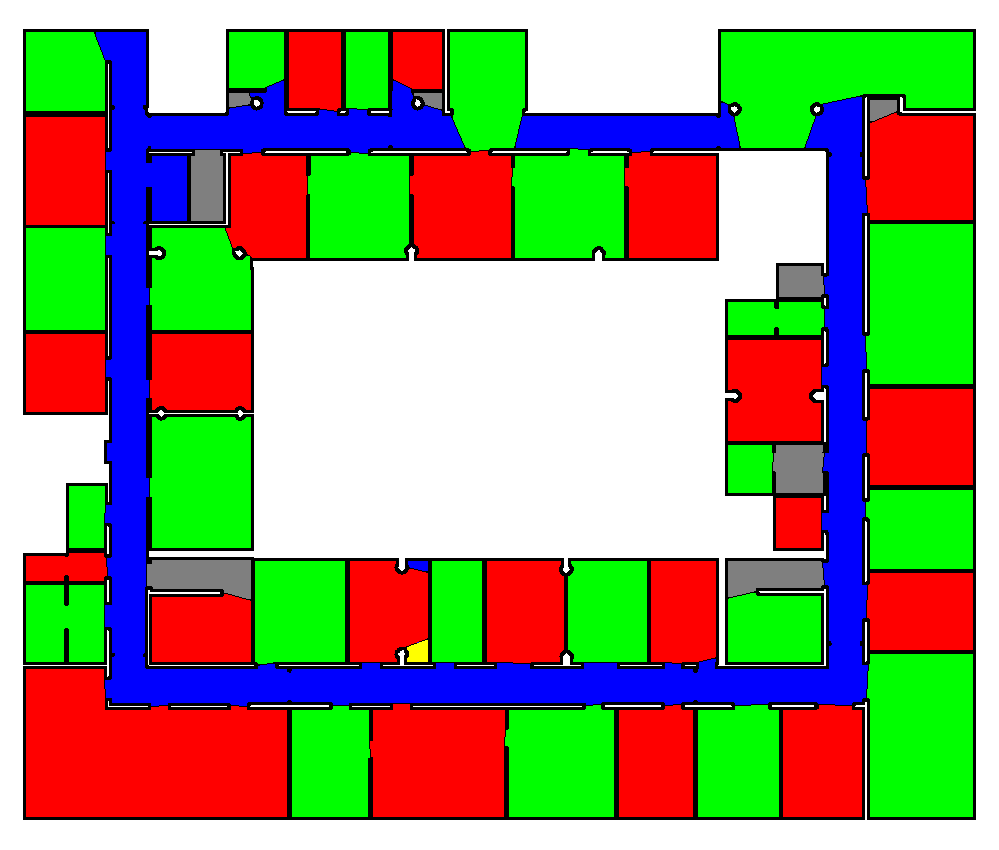A method to segment maps from different modalities using free space layout -- MAORIS : MAp Of RIpples Segmentation
How to divide floor plans or navigation maps into semantic representations, such as rooms and corridors, is an important research question in fields such as human-robot interaction, place categorization, or semantic mapping. While most works focus on segmenting robot built maps, those are not the only types of map a robot, or its user, can use. We present a method for segmenting maps from different modalities, focusing on robot built maps and hand-drawn sketch maps, and show better results than state of the art for both types. Our method segments the map by doing a convolution between the distance image of the map and a circular kernel, and grouping pixels of the same value. Segmentation is done by detecting ripple-like patterns where pixel values varies quickly, and merging neighboring regions with similar values. We identify a flaw in the segmentation evaluation metric used in recent works and propose a metric based on Matthews correlation coefficient (MCC). We compare our results to ground-truth segmentations of maps from a publicly available dataset, on which we obtain a better MCC than the state of the art with 0.98 compared to 0.65 for a recent Voronoi-based segmentation method and 0.70 for the DuDe segmentation method. We also provide a dataset of sketches of an indoor environment, with two possible sets of ground truth segmentations, on which our method obtains an MCC of 0.56 against 0.28 for the Voronoi-based segmentation method and 0.30 for DuDe.
PDF Abstract